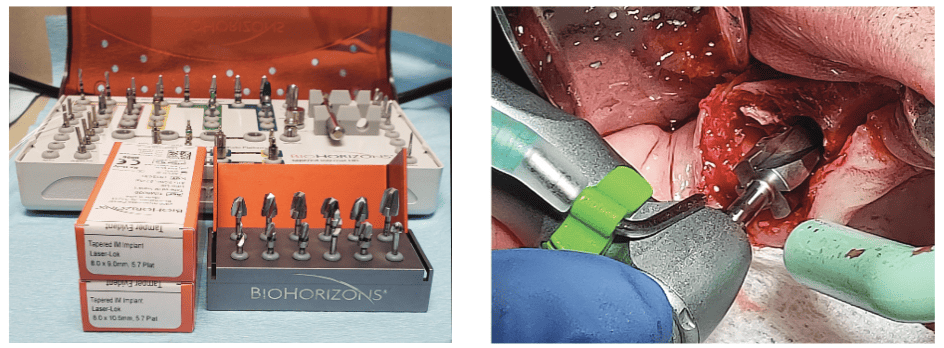Editor’s intro: Although molar dental implants can be challenging, there are several choices for predictable and positive outcomes.
Dr. Justin D. Moody discusses the efficacy of immediate molar dental implants

The benefits of properly placed immediate dental implants into single-rooted extraction sites in the esthetic zone have been well documented for several years now. In the anterior maxilla, the preservation of ridge dimension and the stability of the soft tissue architecture are paramount for a successful true tooth replacement solution. Many times this can be achieved without the use of bone-grafting materials. This makes the service more cost-effective to the patient while being more surgically conservative, which, in my opinion, is usually better in the esthetic zone.

Replacement of molars has always been a struggle to be done at the time of extraction for many reasons. First, due to the morphology of molar teeth, the bone is rarely in a position post-extraction where the dental implant can be placed in the perfect prosthetic position. Today’s immediate molars are wider and come in a variety of sizes to accommodate the sites and allow for primary stability of the fixture engaging the walls of the extraction site. The key to the prosthetic success is the placement of the implant; it must be made subcrestally so that the emergence profile is closest to that of the tooth that was lost. Second, there is very little opportunity to get primary closure over a molar extraction site, which has always made grafting the site challenging to say the least. With the placement of the immediate molar and its affinity for good initial stability, the placement of a healing abutment at the time of implant placement greatly increases our ability to get a soft tissue seal over the implant.

Biology still dictates when a site is a good candidate for an immediate molar. Having 1.5 mm or more of bone all around the implant, especially on the buccal, will lead to reliable long-term success. Choosing an implant that was designed for this application through science will further add to the potential for immediate molar success. I have been using the BioHorizons® immediate molar since its release; the tread pattern is deep, providing good initial stability and a 5.7 mm platform that is compatible with my current Bio-Horizons surgical and prosthetic kits — the only addition is a final drill that is sized to the implant. It also has Laser-Lok® technology, which has a dual affinity for bone and soft tissue, making integration and soft tissue management predictable.
Immediate molar implants have their place in dental treatment, providing you use good common sense and follow the biological principals for integration and soft tissue management.
For an interesting case involving molar dental implants for a patient during cancer treatment, read Dr. Krey’s article, “A chemotherapy patient’s experience with dental implants”.
Stay Relevant With Implant Practice US
Join our email list for CE courses and webinars, articles and mores

 Justin D. Moody DDS, DABOI, DICOI, is a Diplomate in the American Board of Oral Implantology, Diplomate in the International Congress of Oral Implantologists, Honored Fellow, Fellow, and Associate Fellow in the American Academy of Implant Dentistry, and Adjunct Faculty at the University of Nebraska Medical Center. He is an internationally known speaker, founder of the New Horizon Dental Center (non-profit clinic), and Director of Implant Education for Implant Pathway. You can reach him at
Justin D. Moody DDS, DABOI, DICOI, is a Diplomate in the American Board of Oral Implantology, Diplomate in the International Congress of Oral Implantologists, Honored Fellow, Fellow, and Associate Fellow in the American Academy of Implant Dentistry, and Adjunct Faculty at the University of Nebraska Medical Center. He is an internationally known speaker, founder of the New Horizon Dental Center (non-profit clinic), and Director of Implant Education for Implant Pathway. You can reach him at 

